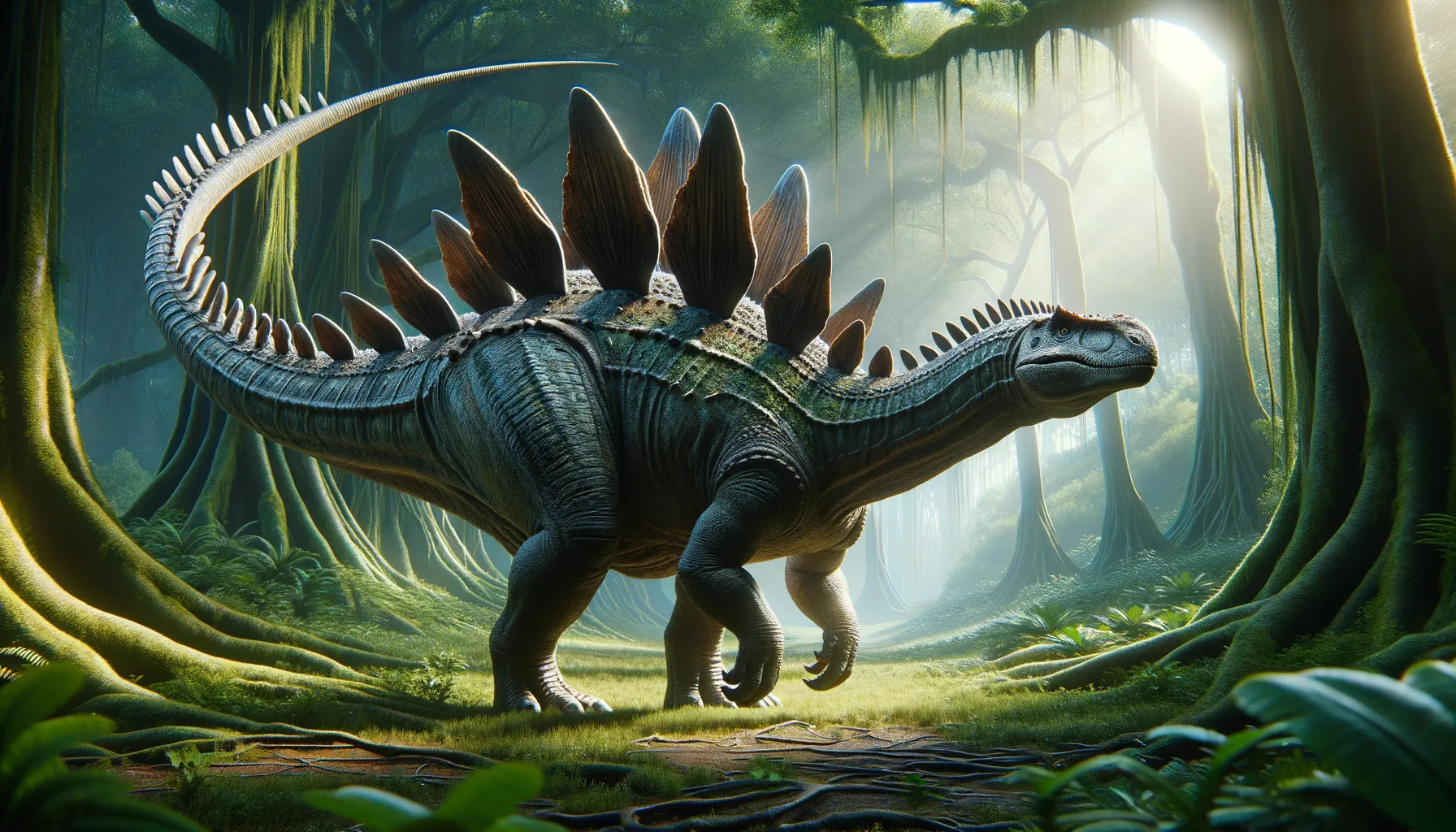
Tuojiangosaurus
Spiked tail and plates for fierce protection!
Period
Jurassic
Length
About 23 feet long.
Height
Around 7 feet at the hips.
Weight
Approximately 2 to 4 tons.
The Tuojiangosaurus, a fascinating stegosaurid dinosaur, roamed what is now China during the Late Jurassic period. Known for its two rows of iconic, paired plates along its back and a spiked tail for defense, this herbivore thrived in lush forests. Its discovery has provided valuable insights into the evolution and diversity of stegosaurs, showcasing unique adaptations that helped it survive in a challenging prehistoric world.
Diet
Tuojiangosaurus was an herbivore, feeding primarily on low-lying plants and bushes. Its beak-like mouth was ideal for gripping and stripping foliage.
Hunting
As it was a herbivore, Tuojiangosaurus did not hunt. Instead, it foraged for plants and possibly moved in herds to increase foraging efficiency and deter predators.
Environmental challenges
This dinosaur faced various environmental challenges, such as scarcity of food during dry spells. Its large body required significant amounts of vegetation to sustain itself. Furthermore, it had to stay vigilant against predators like large theropods, which were common during the Jurassic period.
Speed
Slow, due to its heavy body and short legs.
Lifespan
Estimated to live around 70 to 80 years.
First discovery
Discovered in the Shuanggou Formation, Sichuan Province, China, in the 1970s.
Fun Facts
- Tuojiangosaurus was a plant-eating dinosaur that lived during the Late Jurassic period, about 150 million years ago.
- It was about 23 feet long and weighed around 4 tons, which is roughly the weight of an average car!
- Tuojiangosaurus is known for its distinctive double row of plates running along its back, which likely served as a form of display or defense.
- This dinosaur had a pair of spikes on its tail that it used to defend itself against predators.
- Its name means 'Tuo River lizard', as it was first discovered near the Tuo River in China.
- Tuojiangosaurus belonged to the Stegosauria group, which is famous for having armored plates and spikes.
- Scientists believe Tuojiangosaurus may have traveled in herds to protect themselves from carnivorous dinosaurs.
Growth and Development
Tuojiangosaurus grew steadily, with rapid growth phases during its juvenile stage. As a young dinosaur, it had to develop strong defenses quickly. Its plates and spiked tail started forming early to provide protection as it matured.
Habitat
This dinosaur inhabited semi-tropical environments with dense vegetation. The lush forests provided ample food sources, while the proximity to water bodies helped support both plant growth and hydration needs. Seasonal changes likely affected its habitat, influencing migration patterns.
Interaction with other species
Tuojiangosaurus likely coexisted with other herbivores, sharing grazing grounds. It may have also formed mixed-species groups with other dinosaurs for protection. Predators would target weaker or isolated individuals, making social interactions essential for survival.
Natural lifespan
Tuojiangosaurus could naturally live up to 80 years under favorable conditions.
Reproduction
The exact reproductive behavior of Tuojiangosaurus remains unclear, but like many dinosaurs, it likely laid eggs in nests. Parental care was probably limited, and hatchlings had to fend for themselves shortly after birth.
Social behaviour
Tuojiangosaurus might have traveled in groups, which could offer safety in numbers against predators. Group dynamics likely included cooperation in foraging and defense strategies. However, competition for food resources could have occurred too.
Fossil locations
Fossils have primarily been found in China's Sichuan Province, providing key insights into Asian dinosaur fauna. The well-preserved remains have allowed paleontologists to reconstruct much of its life history and interactions with the environment. The Shuanggou Formation, in particular, is rich in Jurassic fossil finds.
